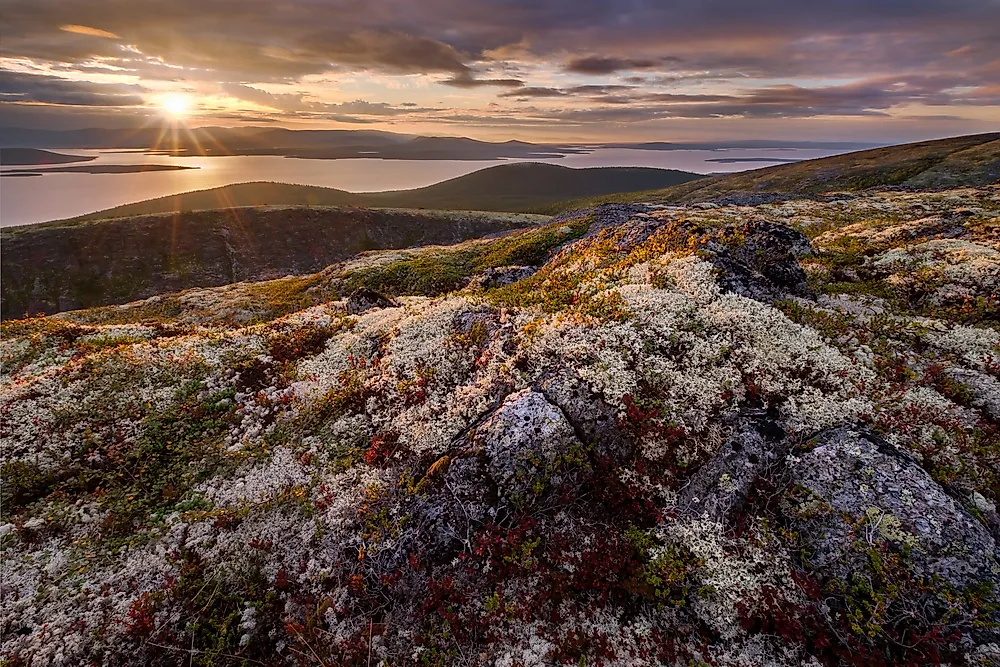Special Adaptations Of Plants Growing In The Tundra

The tundra is a treeless biome in which low temperatures and short growing seasons limit plant growth above a certain height. There are three types of tundra: Arctic tundra, Antarctic tundra, and alpine tundra. While Arctic and Antarctic tundra exist near the Earth's northern and southern poles, respectively, alpine tundra exists in mountains, usually between the treeline and snowline. Temperatures in the tundra are well below the freezing point for most of the year, and fast, cold winds often blow over the landscape. The topsoil remains frozen most of the year, and the permafrost can be hundreds of feet thick. Although plant growth may seem imposible in such conditions, certain forms of vegetation do exist, such as sedges, grasses, mosses, lichens, and dwarf shrubs. However, these forms of vegetation have special adaptations that enable them survive in the tundra.
Tundra Plants Are Low-Growing
Low-growing plants are typical in the tundra, and most plants do not exceed 12 inches in height. Since nutrient and water availability in the tundra is low, it is difficult for plants to grow taller. Growing close to the ground also prevents plants from freezing. In addition to the lack of nutrients and water, trees are unable to grow due to the frozen soil.
Tundra Plants Tend to Grow in Clusters
Plants of the same species often grow near each other in clusters in the tundra. This adaptation helps plants conserve heat by reducing the surface area exposed to the cold, as well as protecting the plants from winds.
Tundra Plants Are Dark in Color
Dark colors absorb and retain heat better than light colors. Therefore, plants in the tundra tend to have dark-colored leaves and stems that help them absorb solar heat faster and keep warm for longer periods. Some plants are even red in color.
Some Tundra Plants Are Protected by Hair
Certain plants in the tundra have hair covering their stems and leaves. Just as fur traps air and acts as an insulator in animals, hairy outgrowths on plants keeps their temperature more moderate and prevents freezing.
Tundra Plants Have Short Growing Seasons
Plants growing in the extreme tundra climate usually have a short life cycle or a limited growing season. Most plants grow during the short summer, when the soil thaws enough for plant roots to draw sufficient water and nutrients required for growth. Some plants complete their entire life cycle within one season, while others remain dormant for the rest of the year.
Tundra Plants With Specialized Flowers
Some flowers in the tundra, such as the Arctic poppy and Arctic dryad, have dish-like flowers that can follow the sun as it moves throughout the day. These flowers absorb energy and warmth from the sun and transmit it to the rest of the plant.
Tundra Plants Have Short, Horizontal Roots
Plants growing in the tundra tend to have short roots that usually spread horizontally, as they cannot penetrate the permafrost below.
Not All Tundra Plants Need Soil
Some types of plants, like mosses and lichens, can grow on bare rock surfaces in the absence of soil.











